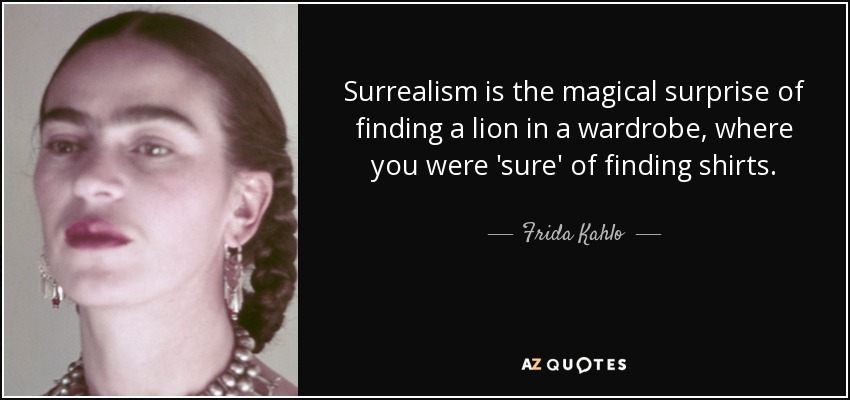Modernism was era of modern art. This was the last “ism” of
art. Modernism raised in 19th century, with the introduction of
fashion, painting, sculpture, photography, impressionism, surrealism, futurism,
pop art, op art. During this period, women were more involved in outside worlds
since all men were on war. Women took over duties of men and were successful at
the industrial revolution. During this time, a lot of the artwork was a big
experiment. They all tried to depict real world. Woman artist were not taken seriously until
later this time when modern movement of art could only happen with major
involvement of women artists. Women were always seen as object of sexuality or
trophy whose purpose were to serve men and their family. Their creativity or
talent was never given a serious interest.
Abstraction is usually non representational, the form uses
geometric shapes or gesture marks which have to external visual reality.
However. it may have connection to the real world as well. “Modernity is both linked to the desire for the new
fashion expresses so well, and culturally tied to the development of a new
visual language for the twentieth century- abstraction” (Chadwick 253). Women
were more open to other ideas of art.
During the revolutionary change of the “ism”, Dada was an
artistic and literary movement that began in Zurich, Switzerland. It gained
light after the reaction to World War I and the nationalism that many thought
had led to the war. Dadaism was influenced by Cubism, Futurism, Constructivism,
and Expressionism.
Sophie Taeuber-Arp was a leading figure in Zurich and Paris
during the dada movement. She referred her painting as concrete paintings as
her training in textile industry influenced them during Cubism. From 1916-1928
she taught textile design at the Zurich School of Arts and Crafts. She was extremely popular with her
sculptors. The image below is one of her
many popular works.
Sophie Taeuber-Arp - Dada Kopf, portrait de Hans Arp, 1918 .
Another great artist during this era, Sonia Delaunay, was a
big influence of Dada art. She helped develop a theory of color known as
stimultanism with her husband Robert Delaunay. (Guerilla Girls, Pg 60) Sonia
was the breadwinner for the family, until her family lost their wealth. The
image below is one of the popular work by her.
 Disdaining rationalism and literary realism, and powerfully
influenced by psychoanalysis, the Surrealists believed the rational mind
repressed the power of the imagination, weighting it down with taboos. Initially,
women were important to the Surrealists not as artists but as muses and
lovers. “Alienated from Surrealist theorizing about women, and from the
search for a female muse, women turned instead to their own reality. Surrealism
constructed women as magic objects and sites on which to project male erotic
desire” (Chadwick, 313). Surrealists became a major force in art beginning
in the 1920s. Visionary and symbolic, the women's imagery frequently
incorporated dreamscapes and architectural interiors in which women were
strong, dominant figures controlling their environments.
Disdaining rationalism and literary realism, and powerfully
influenced by psychoanalysis, the Surrealists believed the rational mind
repressed the power of the imagination, weighting it down with taboos. Initially,
women were important to the Surrealists not as artists but as muses and
lovers. “Alienated from Surrealist theorizing about women, and from the
search for a female muse, women turned instead to their own reality. Surrealism
constructed women as magic objects and sites on which to project male erotic
desire” (Chadwick, 313). Surrealists became a major force in art beginning
in the 1920s. Visionary and symbolic, the women's imagery frequently
incorporated dreamscapes and architectural interiors in which women were
strong, dominant figures controlling their environments.
Roots, 1943 by Frida Kahlo
In this painting, Frida is depicted as her torso opens up
like a window and gives birth to a vine. It's her dream of being able to give
birth as a childless woman. Frida's blood circulates the vine and reaches
beyond the leaves' veins and feed the parched earth. With surrealism, Kahlo was
able to connect with her audience by portraying her true self, through many of
self-portraits and paintings.
Women artist were bolder with their paintings as well as their
portraying their true inner self. With the
influence of extremely creative and fierce women artists, modernism ha become
an important aspect of art history which continues to influence 21st
century.
Work Cited:
National Museum of Women in the Arts." Sophie
Taeuber-Arp. Web. 27 Mar. 2016.
Chadwick, Whitney. 2012. Women, Art, and Society. 4th
ed. New York, NY: Thames and Hudson.
Guerrilla Girls. 1998. The Guerrilla Girls' Bedside
Companion to the History of Western Art. New York, NY: Penguin Books



No comments:
Post a Comment